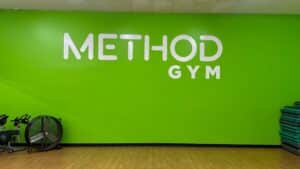Over the past few years, there has been a growing adoption of digital transformation and the collection of data digitally in the fitness industry. Consumer data provides powerful insight into trends, preferences, and buyer preferences, not to mention it can help pave the way to success by allowing your club to make data-driven decisions.
Club OS’s VP of Product Nick Hahn recently sat down with CEO of Vedere Venture & FITC Bryan O’Rourke for an episode of his Fitness and Technology podcast in which the two discussed emerging data and automation trends in the fitness industry. In this article, we’ve summarized five key takeaways from this podcast that can help you make smarter decisions to help your club grow faster.
1. There is a growing conflict between vendors and consumers about consumer data.
After the Affordable Care Act was passed in 2010, there was a massive data grab in which vendors were trying to steal customer data from their payers, according to Nick, which created a conflict between the consumers and the healthcare industry. Eventually, payers had to decide whether they wanted to maintain control of their own data or lease it out to the vendors.
Bryan noted how this dynamic is playing out in the fitness industry. Vendors in our industry have a lot of access to consumer data, which is valuable for making data-driven decisions based on real trends. Businesses can compare their customer data with competitor data, which Bryan compared to Amazon using metrics it gathers about denim brands and sellers on its platform to create competing “Amazon Essentials” jeans.
Nick brought up that companies like Amazon don’t necessarily share all the data it gathers with its customers/resellers. Resellers get to see some metrics, but they won’t see all of them or how they stack up to others. They’ll lack a lot of the data that will make it possible to analyze the finer details or put the data in context. Platforms like Amazon are now in the position to make decisions about what products and trends play well in certain demographics, but their resellers don’t get that insight.
2. You can’t rely on your gut — focus on objective data and contextual information.
Both Nick and Bryan reflected that many decisions in the fitness industry are still made based on instinct rather than objective data. Many decision makers have great ideas and intuition, but it’s vital to be able to back intuition and ideas up with data.
Nick said that he’s encountered decision makers who think they’re making data-driven decisions, but they’re not — they’re based on someone’s gut feeling. He described sometimes showing shot callers “the data they were asking for and putting it in front of them,” and still seeing some “industry veterans who operate 40+ clubs in multiple regions” say, “Wow, that’s surprising to me, but now I’m going to use my intuition to apply our resources in a different area.”
Bryan emphasized the importance of not just looking at data but also looking at it contextually and asking the right questions. Depending on the decisions you’re trying to make, you may need to consider the entire fitness industry, the success of sales calls made at different days of the week from your club, or the success and viability of billboard campaigns.
To ensure you’re assessing the right data in the right way, Nick said, you need technology that’s showing you the relevant comparisons.
3. Use your data to create beneficial automation.
With high-quality data in hand, you can implement automation to drive down costs and boost efficiency. Using automation can improve your show rates, raise your conversion rates, and increase revenue at your club.
For example, automation can free your sales team to focus their efforts on meaningful interactions rather than initial contacts, which are often generic and impersonal. Automating the sending of introductory text messages or emails means you’re moving people through the sales funnel faster while saving your sales team’s time and letting them focus on what mission-critical tasks. Automation can also help your sales and marketing teams understand which types of offers resonate most with prospects.
Nick suggested how this might play out in your club: You encourage a prospect to join online. If they don’t join in the next few days, you send automated text or email messages with a link to sign up for a tour. This can help get them in the door and allow your team to nurture the relationship and resolve any objections or hesitations they may have.
Automation at this early stage puts the ball in the prospect’s court and lets them decide how and when they talk to your team. This tactic ensures the prospect is more sales ready when they approach your team.
Automation also offers high-quality scalability. Technology has evolved to allow consistency in your messaging to prospects while freeing your sales team to focus on calls and outreach efforts that require a human touch. Chains with multiple locations, for example, can centralize their efforts if those initial outreach efforts are automated.
4. The greatest opportunities come from combining utilization and engagement information with analytics.
To take your club to the next level, it’s vital that you understand how members are engaging with your club, such as who is attending which classes or using which equipment. Analytics can help you identify trends so you can capitalize on them.
For example, suppose members are regularly purchasing smoothies after one of your group fitness classes. You might want to run a promotion so people who attend certain group classes receive discounts on their post-class smoothie to keep them coming back. Now, not every class is likely to have the demographics that are interested in that post-class smoothie; don’t make blanket offers to every class. Use your club management software to automatically send personalized offers to specific members, and track who is taking advantage of these promotions.
You can also use your club management software to identify where in the sales process prospects are dropping off and build custom workflows and messaging to address different scenarios. Suppose a prospect drops off immediately after seeing your fees or exits before entering their payment information. You can create automated workflows with messaging tailored to those challenges. Lean into what the data is telling you and use your automation tools to make the most of each opportunity.
Unfortunately, customization could be the biggest barrier for clubs. Building out personalized and automated workflows based on member data — rather than mass emailing generic offers because you think they’ll appeal to a wider audience — is time consuming, to say the least.
5. Finding the right technology partner is more important than ever.
Club OS and ASF prioritize providing customers with as much insight as possible, including offering a free consultation service to help them understand their data and make recommendations about how to apply that information in their specific context. We focus on the bigger picture, asking “How is your revenue doing this month?” rather than “How much are you going to collect next month?”
We even step deeper into micro-decisions. For example, what is the best time of day to call a prospect who submitted a web lead? When is the next time you should call them back if they don’t answer during the first call?
After analyzing the data, applying what you see you to your specific location is super important. Different locations under the same corporation might be targeting different demographics – and that is data you can uncover with Club OS and ASF. Track specific location data with ease and see how your salespeople are doing with our tailored automation, which allow you to track and communicate differently with prospects throughout the process and ensure you’re following through with them all the way to signing on the dotted line.
Our goal is to help our customers and their gyms level up. Successfully using data and automation will lead you to new opportunities and the ability to reach your prospects in a new way that will boost your club’s revenue streams. We aren’t pretending we know more than our customers or withholding data from you. Rather, we want to share our data and what we’ve learned to help you succeed. If our customers and their gyms are more successful, we’re more successful — and that is something we firmly believe in.
Let Club OS and ASF Help You Strengthen Your Club
Start building a stronger, more profitable club today. ASF and Club OS recently joined the Fitness Industry Technology Council (FIT-C) as part of our commitment to delivering on the needs of the fitness industry and developing products that will help our clients be more successful.
Check out the entire “Data & Analytics in the Fitness Industry” episode to hear more of Nick and Bryan’s conversation. Then, let us show you how we can help by scheduling a free demo of ASF or Club OS.






